100 Stories
Japan Mint: A Flowering Garden of Coins
The beauty of a culture can be appreciated in myriad forms, not only as colossal wonders like temples and landscape gardens, but also in the form of mundane objects such as tableware and coins. Money is a ubiquitous object that makes the world go round, and numismatics—the act of collecting money—is a hobby shared by enthusiasts worldwide. Every nation has its share of interesting coins, so amassing a collection of world coinage is something I’ve been doing since I was a child. Needless to say, over the course of my time spent living in Japan I’ve managed to gather coins from spare change that struck my fancy, and have even bought a couple special uncirculated sets.
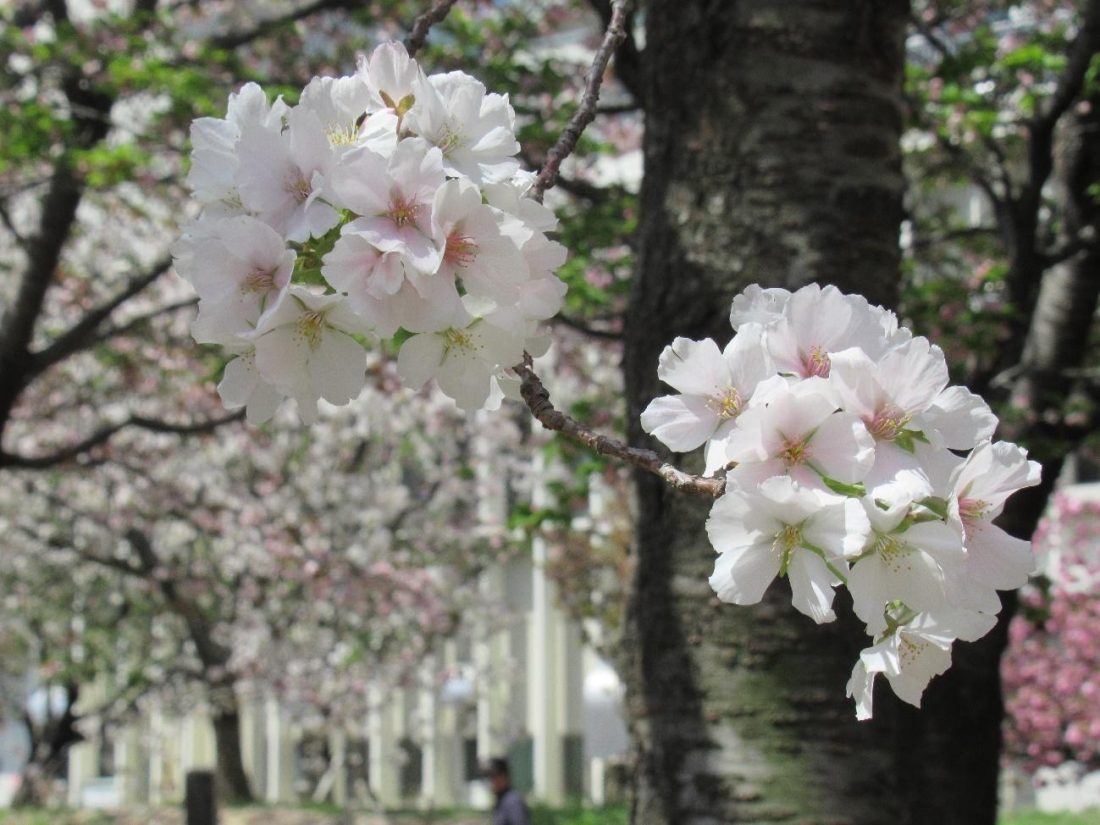
This fascination with coins has also led to interest in the mints that produce them, and the Japan Mint is no exception. The Japan Mint is headquartered in Osaka with branches in Saitama and Hiroshima, and every April, the grounds of the Osaka Head Office and the Hiroshima Branch become awash in a pink and white sea of cherry blossoms and are opened to the public for viewing. A chance to simultaneously see two forms of beauty—the metallic luster of pristine coins juxtaposed with the warm hues of cherry trees—is without a doubt a window of time I simply cannot afford to miss. Though I was already eager to see the Japan Mint Hiroshima Branch for the coins themselves, the arrival of sakura season provided the picture-perfect occasion to check out one of this city’s more obscure tourist sites.
Gamboling Up Coin-dori
No form of public transportation takes tourists straight to the mint itself, but the two primary ways to approach it are bus and streetcar. If going by bus, it’s possible to board the number 55 from Hondori or the Hiroshima Bus Center and get off at Saeki Kumin Bunka Center-Mae, then walk south to the facility. However, I instead decided to take the number 2 streetcar to Saeki-Kuyakusho-Mae, and while it is a longer walk to the Japan Mint, the fare is cheaper and there are more sights to see before I get there. As soon as I got off the streetcar, I headed north until I hit a temple called Honshoji. The beautiful sakura blooming in front were just a taster of what was to come shortly, so I hung a left here and continued until I hit Coin-dori, a busy road that’s a straight shot to the mint grounds.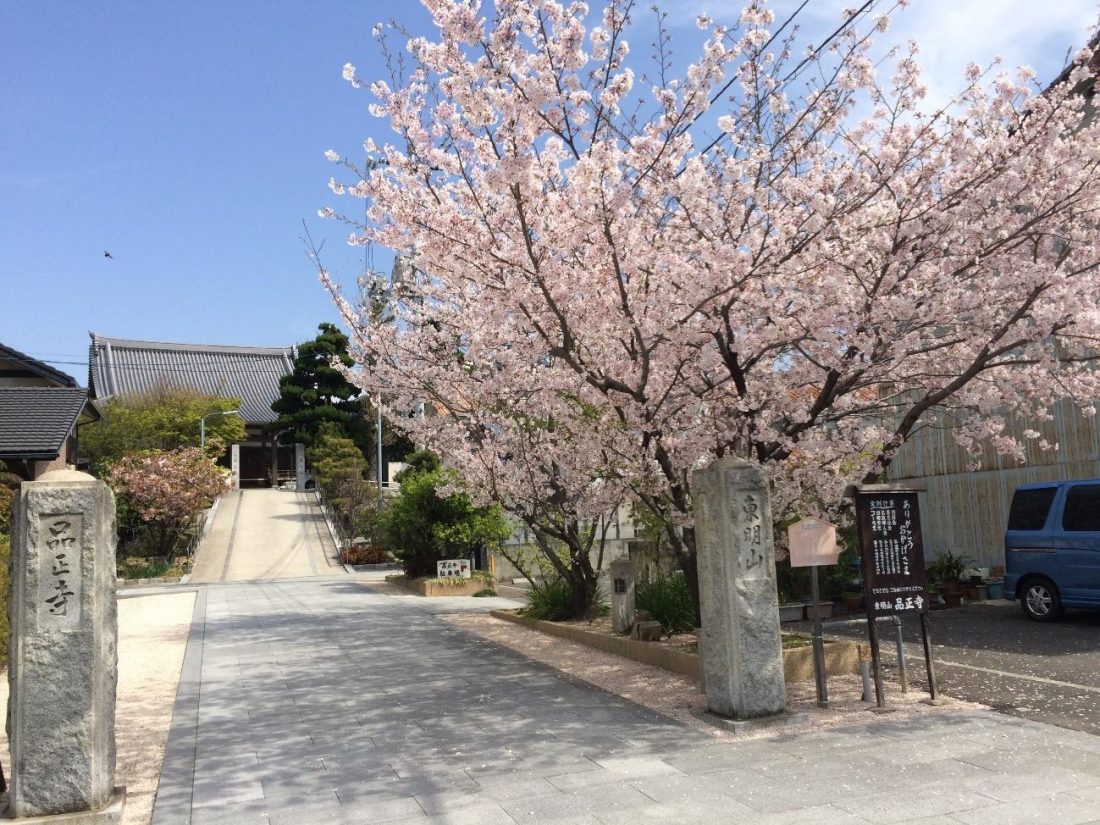 Coin-dori, which means “Coin Street,” is a long road leading north to the entrance of the Japan Mint exhibition room and garden, and apparently one of the major arteries in this part of town. I arrived in the late morning, supposedly after rush hour, and the lanes were still congested with vehicle traffic. As I gamboled up the street, I encountered a plethora of noteworthy establishments and a dozen or so statues of animals holding coins, letting me know I was on the right track. Seeing the mint should only take up a couple hours, after which there are plenty of options for lunch, including cafés, izakayas, an okonomiyaki restaurant, and even supermarkets and convenience stores if you’re pressed for time. On the other hand, if you’ve got nothing else to do for the rest of the afternoon, there’s a karaoke parlor right across from the Japan Mint where you can sing to your heart’s content for a reduced price up until dusk.
Coin-dori, which means “Coin Street,” is a long road leading north to the entrance of the Japan Mint exhibition room and garden, and apparently one of the major arteries in this part of town. I arrived in the late morning, supposedly after rush hour, and the lanes were still congested with vehicle traffic. As I gamboled up the street, I encountered a plethora of noteworthy establishments and a dozen or so statues of animals holding coins, letting me know I was on the right track. Seeing the mint should only take up a couple hours, after which there are plenty of options for lunch, including cafés, izakayas, an okonomiyaki restaurant, and even supermarkets and convenience stores if you’re pressed for time. On the other hand, if you’ve got nothing else to do for the rest of the afternoon, there’s a karaoke parlor right across from the Japan Mint where you can sing to your heart’s content for a reduced price up until dusk.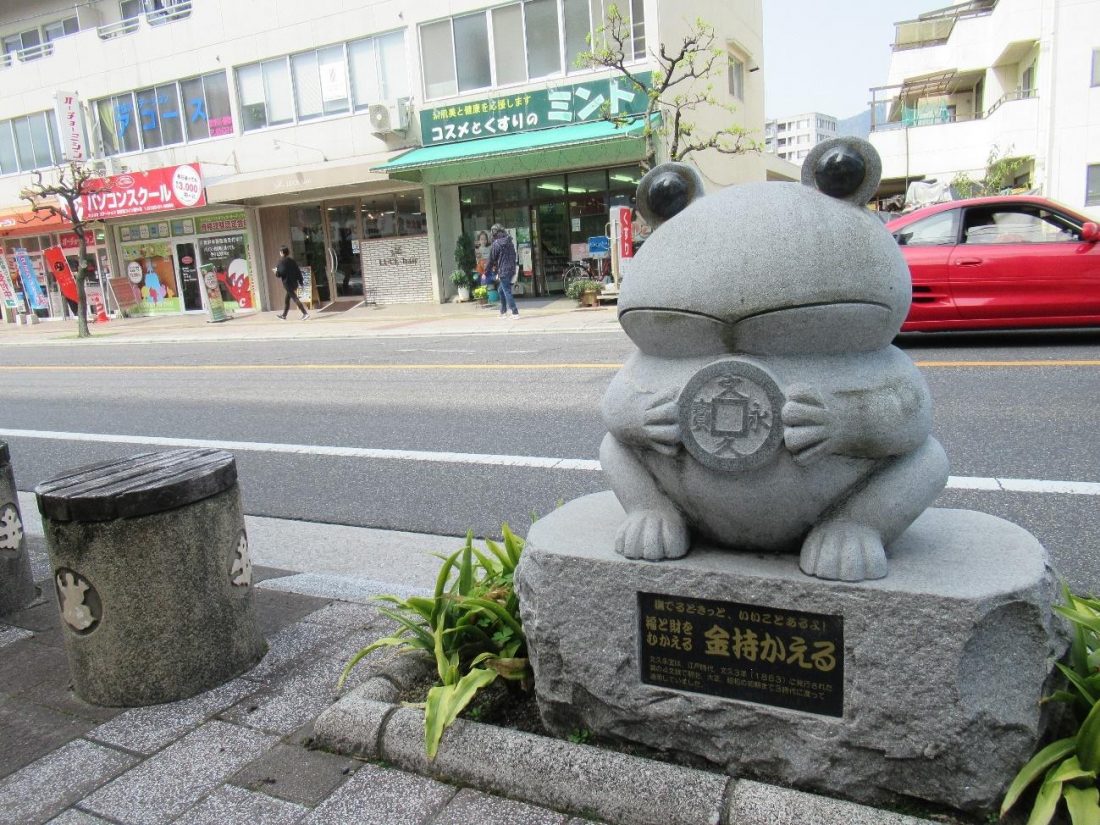
The Numismatic Showroom
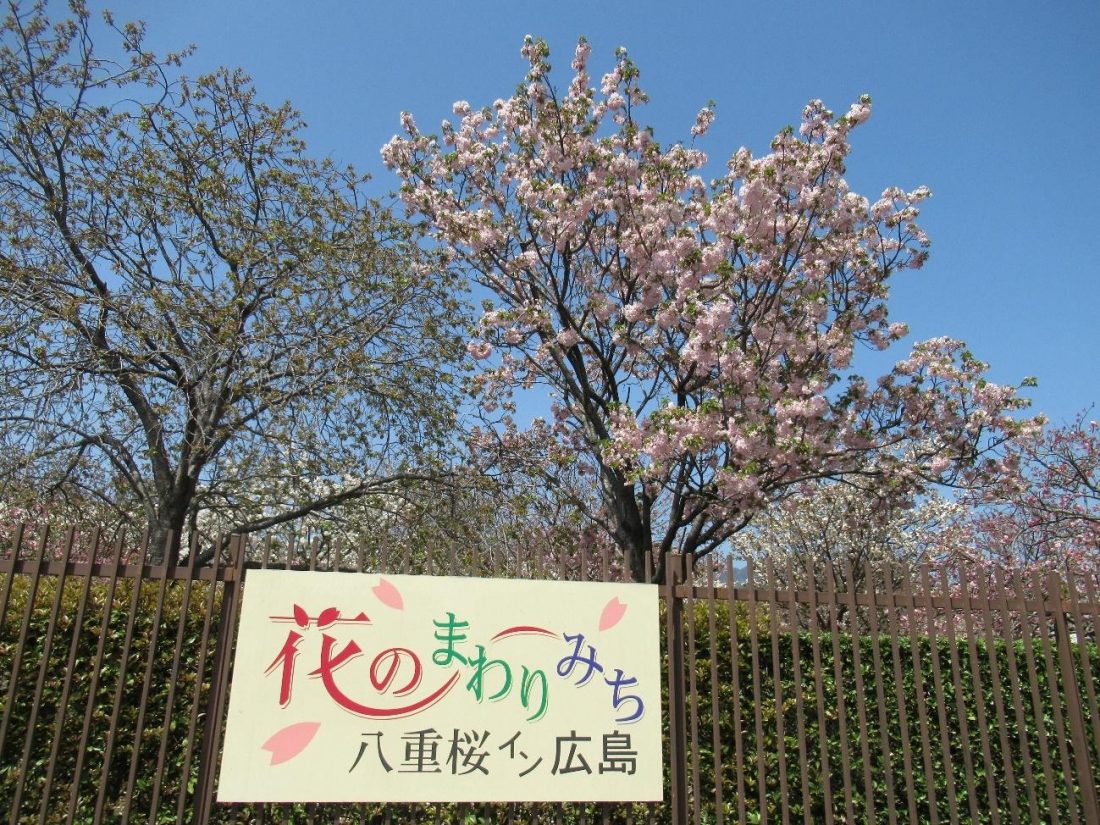
At long last I came upon the exhibition room of the mint, but before entering, I decided to check out the sakura on the outer edge of the garden. Along the fence, they had signs advertising the “Sakura Detour,” a one-week event where the Japan Mint opens up the gates and lets visitors freely roam the grounds, where they can admire the cherry blossoms in all their glory. However, they also close the exhibition room at that time, meaning tourists cannot see both in one visit.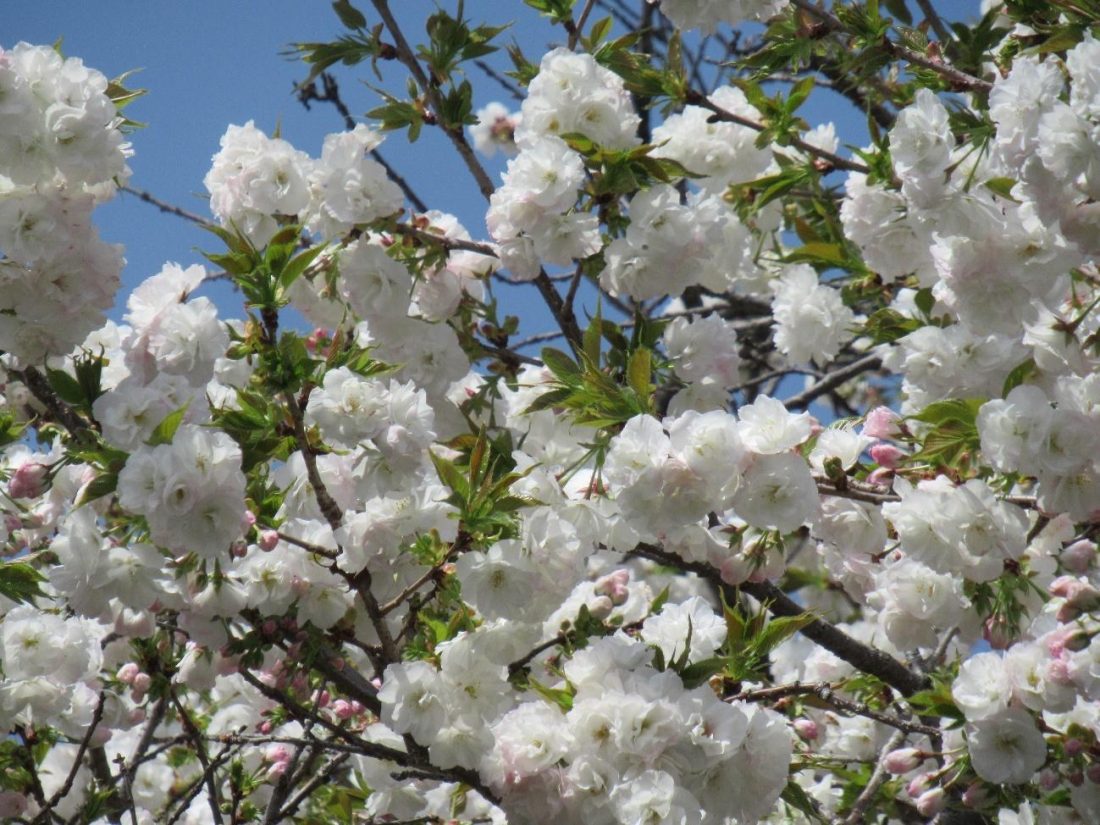
Unfortunately, I was five days early for the Sakura Detour, so these pictures from the outside are the best I can do today. Thanks to my camera’s zoom I was able to snap some detailed pics without even going in. As you can see, however, sakura season is drawing to a close as the petals are slowly being replaced by green leaves, and I can only hope that there will still be a substantial number of flowers next week.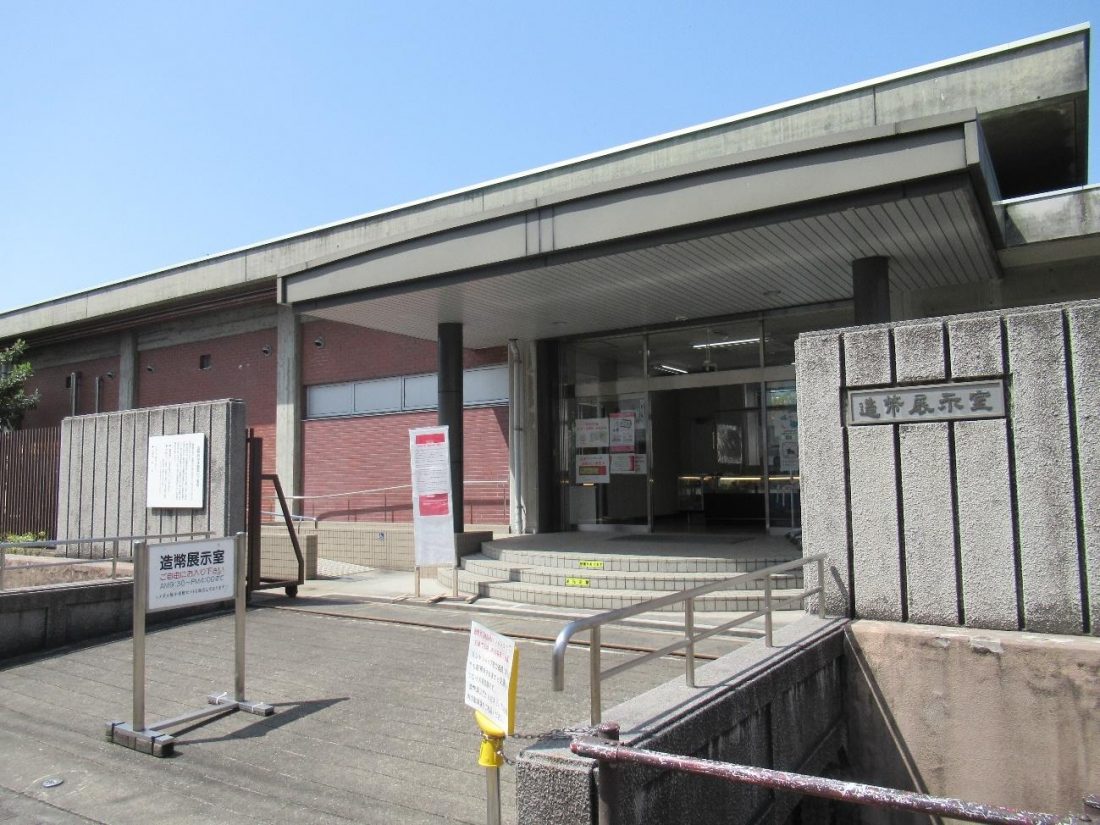
Upon entering the exhibition room, the first thing I encountered was the gift shop. There were lots of gorgeous coins and medals for sale here, but serious collectors would buy what they want sooner online, so I walked past the counter and into the showcase room. I had wanted to take a factory tour as well, but as they weren’t being offered at the time of my visit, this exhibit is all I’ll get this time. Despite it being only one room, though, it still takes a while to read all the information and examine every item on display. Not all of the description are in English, but a fair amount of the key objects will at least have the name in English so foreign visitors can know what’s going on.
The exhibit covers the history of minting coins as well as various products struck by the Japan Mint over its 150-year lifespan. They have money from ancient China, old variations of the Japanese yen, and miscellaneous metallic goods such as silver bowls and medals awarded to outstanding individuals. One case was even dedicated to special edition coin sets featuring cartoon characters.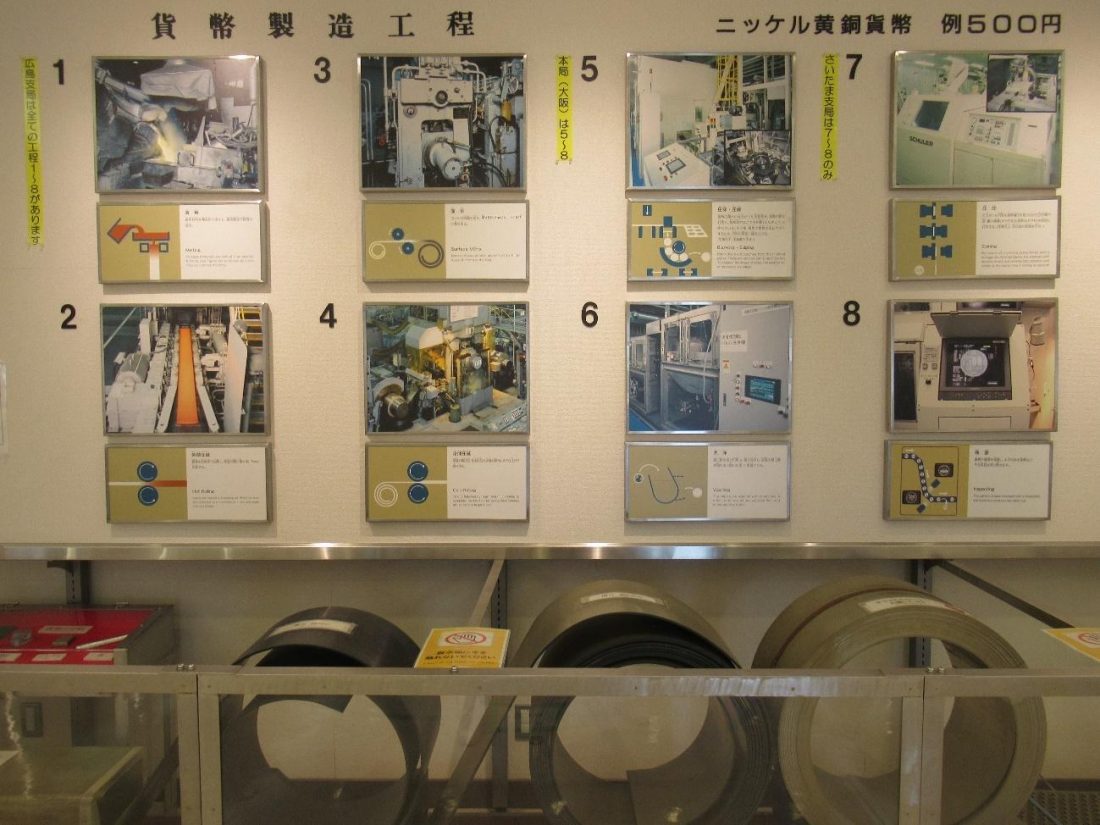
Perhaps the most remarkable display was the section that showed every step in the minting process, from melting to bagging. There are roughly eight steps involved before the coins enter circulation, and the Hiroshima Branch is capable of all of them, whereas the Head Office and Saitama Branch can only handle some. In steps one and two, the metals necessary to make the coin are melted into ingots, which are then flattened to a certain thickness and coiled up by a machine. Once the ingots cool down, steps three and four involve milling them and rolling them into the exact thickness of the desired coin type. This is followed by steps five and six, wherein blank discs are punched out from the ingots, given an edge for definition, heated to soften up the discs for stamping, and then washed in chemicals to remove oils and oxidized film. For step seven, when the discs are dry, the die stamps the design on both sides and the edge of the coin is milled, if applicable. Lastly, step eight has the coins inspected for accuracy and then placed into bulk bags for shipping.
¥1,000,000 worth of ¥500 coins fit into a single bag, which adds up to two thousand coins per bag. At 7 grams per coin, this bag of one million yen weighs approximately 14 kilograms. For comparison, four thousand ¥100 coins are dumped into the same type of bag for ¥400,000, four thousand ¥50 coins in a bag amount to ¥200,000, four thousand ¥10 coins add up to ¥40,000, four thousand ¥5 coins make ¥20,000, and five thousand ¥1 coins would obviously have a value of ¥5,000. These mint-issued bulk bags holding different amounts of money made up of each denomination would naturally have different weights, and when I visited this place years ago, visitors had the chance to try lifting each type of bag. That part of the exhibit seems to be unavailable until further notice, so instead we can use the specs for each coin denomination below to calculate the weight of every bag type and gain a basic understanding of just how heavy certain amounts of money can be.
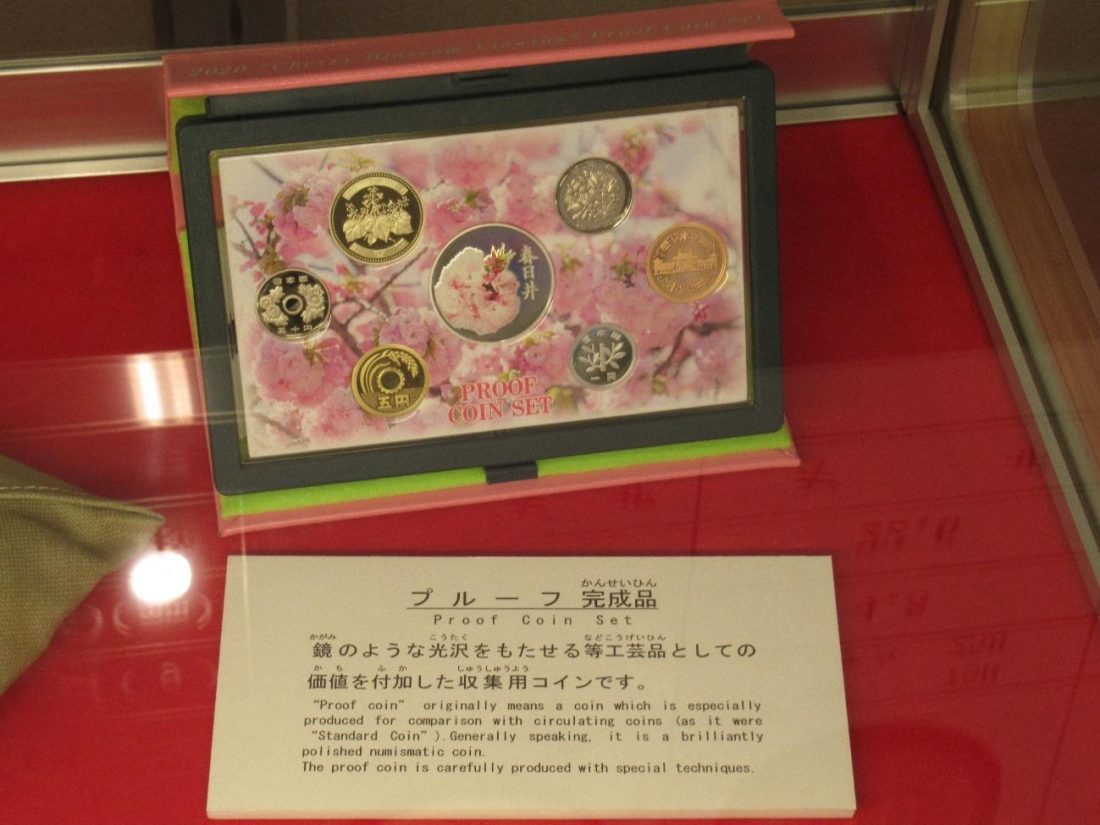
The ¥1 coin (bottom right) just might be the most interesting piece of the bunch considering its physical properties. It has a diameter of 20 millimeters, is 100% aluminum, and weighs exactly 1 gram. In addition to acting as a proxy weight for measuring, this denomination is unique in that it can float on water if deliberately placed horizontally on a still water surface. This happens for three reasons: because aluminum is non-wettable, because the weight of the volume of the water displaced is equal to the weight of the coin, and also because the surface tension of the body of water is not broken when the mass of the coin is spread over a wide surface area. This experiment involving the ¥1 coin can easily be replicated at home, and some shrines—like Konpira-san in Kotohira, Kagawa Prefecture—openly demonstrate this scientific Easter egg to worshippers.
The ¥5 coin (bottom left) is made of brass, has a diameter of 22 millimeters, and weighs 3.75 grams. It’s the only coin that doesn’t have its value in in Arabic numerals as part of its design, requiring one to discern the value from the Chinese characters on the obverse (front) side. Due to a fortunate homophonic coincidence, this denomination is the most popular choice of donation at shrines and temples because the Japanese word for “five yen” (五円 – ごえん/goen) sounds just like the Japanese word for “fate” (御縁 – ごえん/goen).
The metal in the ¥10 coin (far right) is a bronze-brass alloy with a weight of 4.5 grams and a diameter of 23.5 millimeters. Unlike the other denominations which feature a plant on the obverse side, this coin depicts the Phoenix Hall of Byodo-in in Uji, Kyoto Prefecture. ¥10 coins today have a smooth edge, but those minted prior to 1959 have a reeded edge and may be hoarded by some coin aficionados when encountered in pocket change.
The ¥50 yen coin (far left) is lighter at 4 grams, is made from a cupronickel alloy, and has a diameter of 21 millimeters. Like the ¥5 coin, the ¥50 coin also has a hole in the middle, in order to help consumers distinguish it from the ¥100 coin as they are similar in size and color. On the obverse side is a chrysanthemum plant, a flower most commonly associated with the Emperor of Japan.
The ¥100 coin (top right) is 22.6 millimeters in diameter, weighs 4.8 grams, and is made out of the same cupronickel alloy. The obverse side features the classic cherry blossom, the object of attention at the mint facilities in Hiroshima and Osaka. Many commemorative coins are struck in this denomination, including the most recent sets celebrating the Tokyo 2020 Olympic and Paralympic Games.
Last but not least, the ¥500 coin (top left) is the heaviest at 7 grams, 26.5 millimeters in diameter, and is struck from a nickel-brass alloy. Its high face value makes it a prime target for counterfeiters, so later this year, a new bimetallic version of the ¥500 coin will be released to help deter crime. The ratio and allocation of the metals will change, but the size and design will stay the same with some anti-counterfeiting features tacked on.
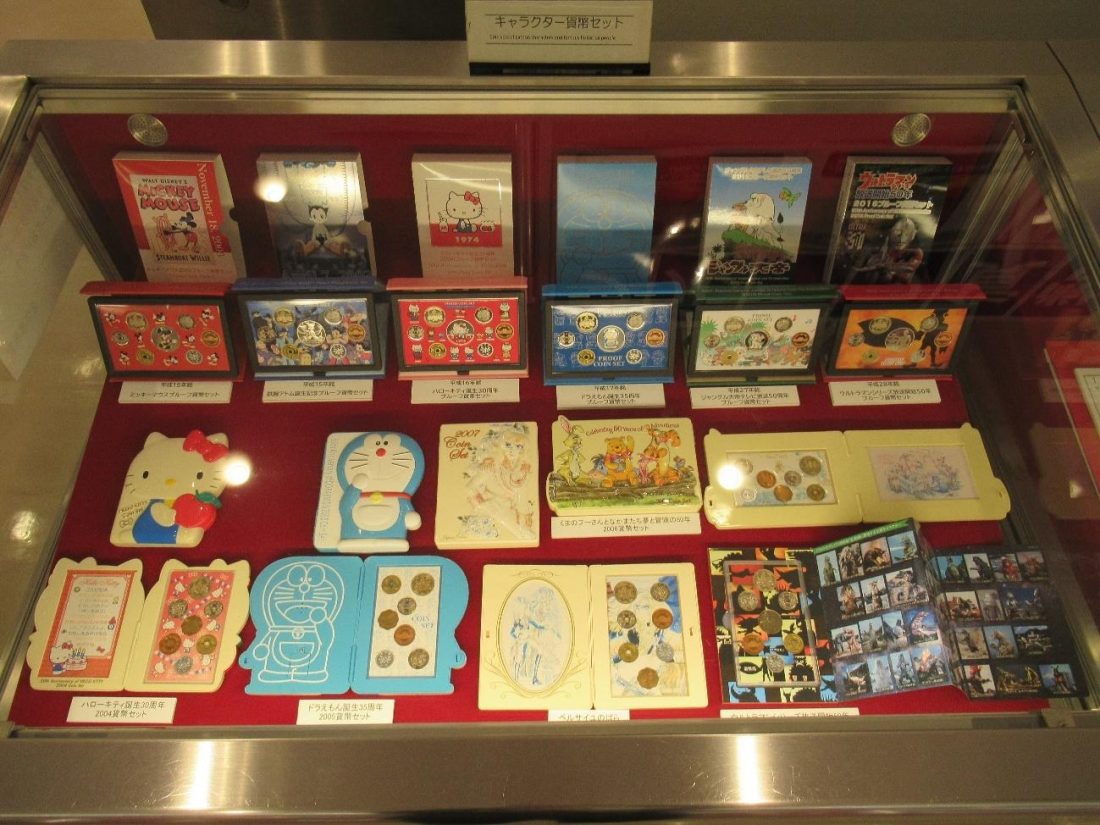
After making one loop around the showroom, it was time for lunch, so I concluded my visit with a stroll back down Coin-dori in search of a meal before hitting the road back to the streetcar station.
Sakura Detour
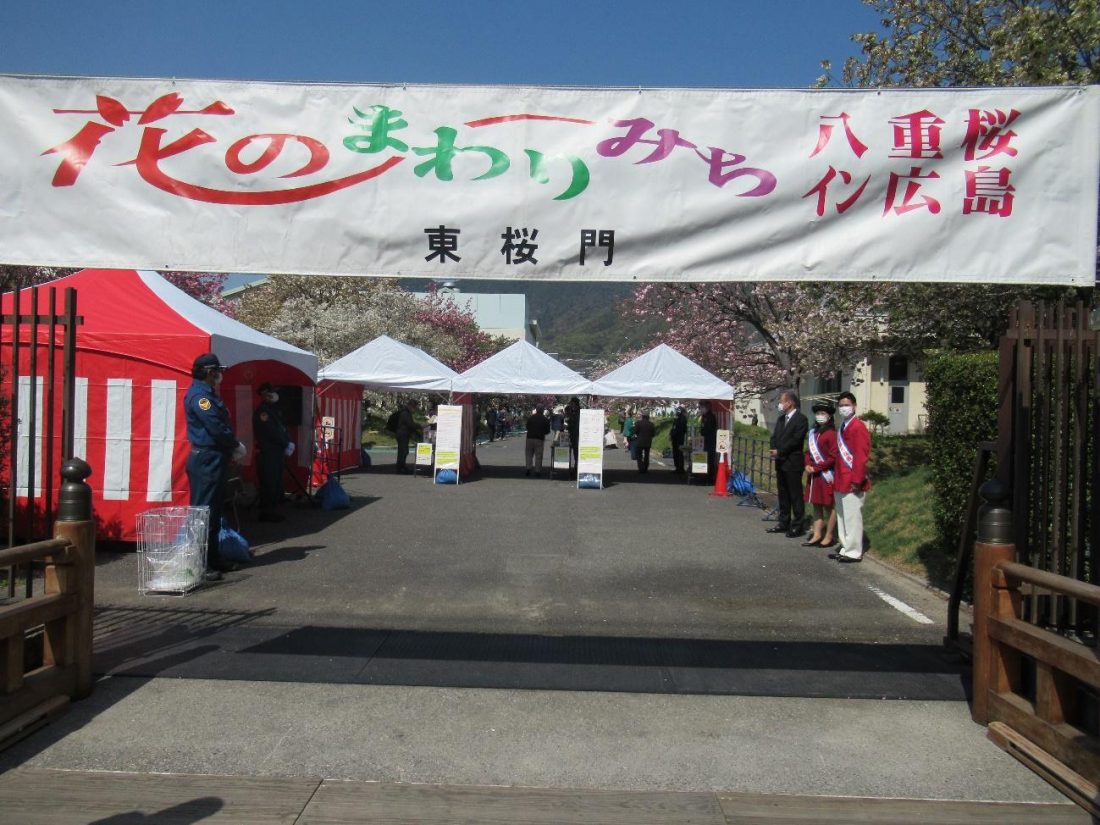
Five days later, I returned to the exact same place to find the exhibit room closed, but another part of the mint grounds open. It seems they went all out making an event out of their garden, with banners at the entrances, greeters at the front, and traditional Japanese music playing on a loudspeaker that echoed throughout the garden. It would seem that the sakura here are late bloomers since most trees still had their petals intact even though mid-April was fast approaching.

The Sakura Detour sports 216 cherry trees spanning 64 cultivars of sakura, including the Blossom of the Year, Kotohira (pictured above). Other cherry blossom varieties include Shogetsu, Yokihi (pictured at the bottom), Kanzan, Omoigawa (pictured up top), and Ichiyo, to name a few. Despite only taking a small amount of space, there are a variety of ways to walk through the garden so a trip here can be as long or short as you want, hence the detour part.
Moment of Joy: Be the Leaf
I walked through the Sakura Detour from a number of angles, with cheery cherry blossoms greeting me at every single turn. Combined with the soothing ambient music, it was like being lost in a warm, sunny spring wonderland. Some of the trees even leaned into the footpaths, which added to the fun of ducking and weaving through vivid pink branches as well as crowds of tourists taking photos. All the while, a cool spring breeze occasionally blew in our direction as I swayed and spun like a leaf in the wind.
My Two Cents
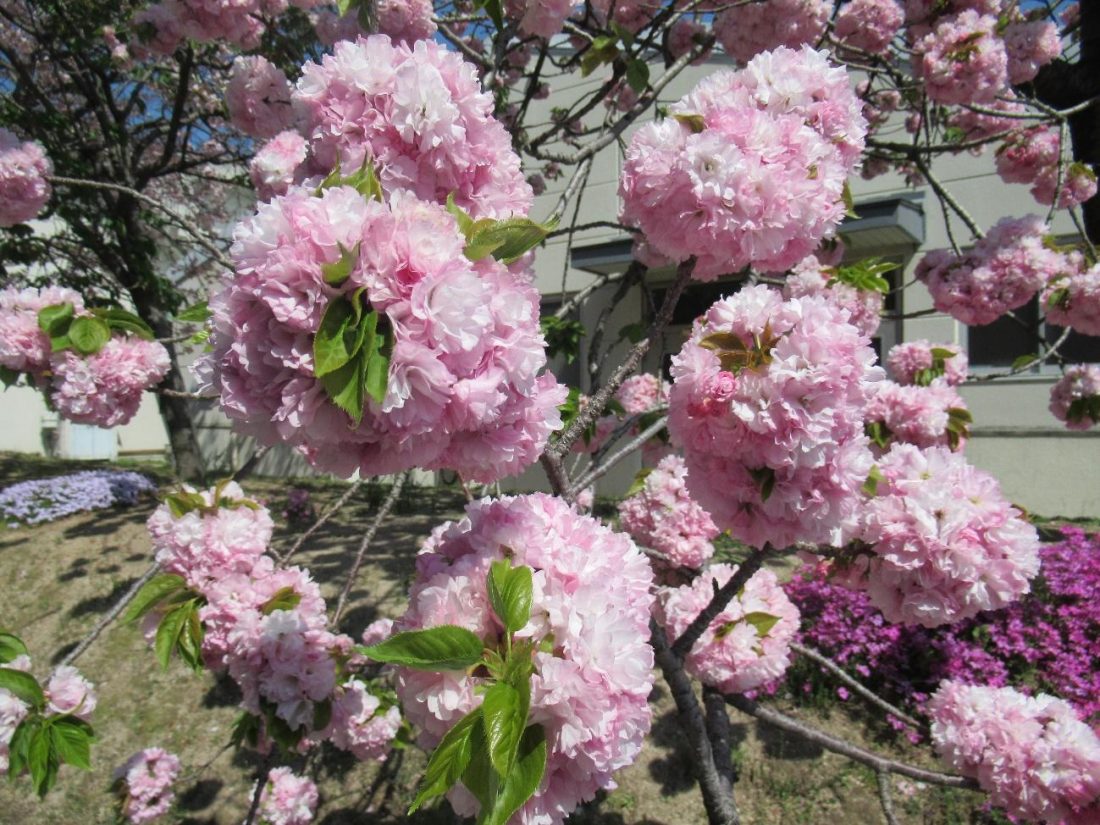 A love for coins and a love for flowers are but two forms of beauty that bring people all over the world together, and the Japan Mint Hiroshima Branch managed to attract no small number of fans of tradition and nature on those two things alone. If you’re in Hiroshima during sakura season (or by the time sakura season ends in mid-April) I strongly recommend dropping by the grounds of the Japan Mint and also checking out the numismatic facilities if possible. It may take a longer while and be a bit costlier to get here than to Shukkeien or Hijiyama Park, but in terms of the number of cherry trees, this location definitely doesn’t disappoint, and rest assured, you will get your money’s worth.
A love for coins and a love for flowers are but two forms of beauty that bring people all over the world together, and the Japan Mint Hiroshima Branch managed to attract no small number of fans of tradition and nature on those two things alone. If you’re in Hiroshima during sakura season (or by the time sakura season ends in mid-April) I strongly recommend dropping by the grounds of the Japan Mint and also checking out the numismatic facilities if possible. It may take a longer while and be a bit costlier to get here than to Shukkeien or Hijiyama Park, but in terms of the number of cherry trees, this location definitely doesn’t disappoint, and rest assured, you will get your money’s worth.




